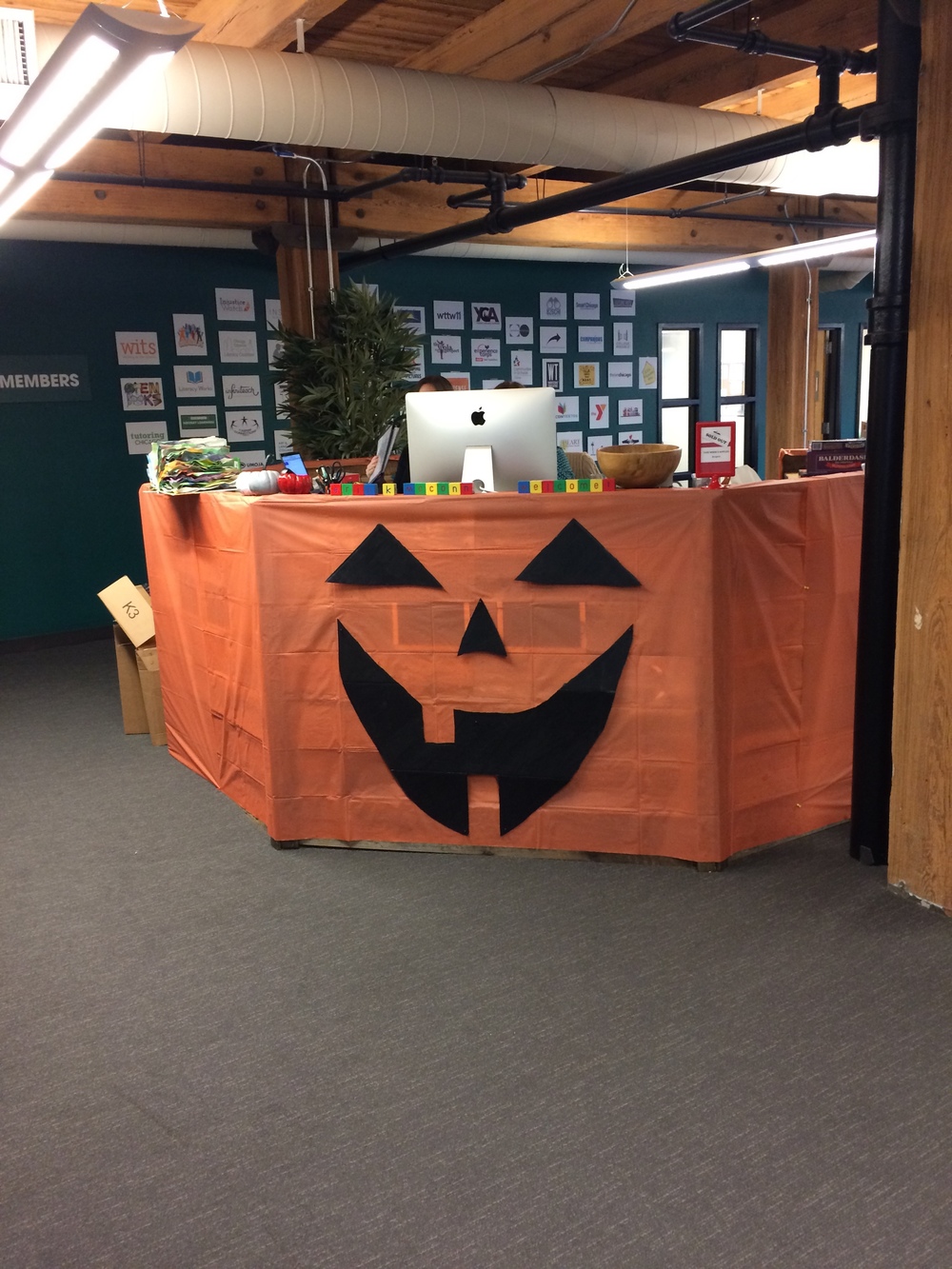More and more workplaces are inviting people to bring their furry friends to work with them, and shared spaces are no different. We have several members in the Network where every day is “Bring Your Dog to Work Day.” Dog-friendly workplaces can be a huge benefit to employees, because they don’t have to pay for dog walking services or doggie day care. The Center for Disease Control, among other researchers, has conducted studies that indicate having dogs around can reduce employee stress and boost morale. In my experience at The Alliance Center, dogs are also a great conversation starter.

“Shared space” is still a relatively new way to work. Because of it’s “newness,” we just don’t have a lot of formal research or guides to show us how to do it well. At the Nonprofit Centers Network 2015 Building Opportunities Conference in June, I spoke on two panels: The first on Community Animation, where I was joined by several other “animators” from spaces across the U.S. and Canada; and the second, on branding for shared spaces. In those two talks, it became incredibly apparent to me how intertwined community animation and branding really are.
This report sums up what so many nonprofits have discovered the hard way – that you often get what you paid for! $1 buildings aren’t the silver bullet they seem to be and need to be evaluated just like any other facility project. Acquisition costs are often just a small part of the overall development cost.
Halloween is one of my favorite holidays, because it’s all about community engagement. There’s no other time of the year where you go out and knock on your neighbors doors – anyone with a porch light on is extending an open invitation. Halloween festivities in the workplace also invite people to reach out to people they don’t know very well and start a conversation, whether it’s an autumn happy hour, a lively costume contest, or simply gathering around the candy bowl in the first week of November.
The Results are In! The 2015 State of the Shared Space Sector Survey Mission-driven shared spaces are growing in number, size, and impact across North America.
Are you doing all you can to help your space meet its mission? I often talk to center managers who are frustrated with tenant partners that don’t engage in the building’s community and don’t collaborate.
 Click image for larger view
Click image for larger view
It’s useful to dust off the concept of Maslow’s Hierarchy of Needs from your Psychology 101 course to understand why. Our tenant partners have many needs that must be met before center managers can expect larger outcomes.
First off, your building must meet your tenant’s basic needs. At a minimum, that means that your building needs to be structurally sound – no leaking roofs of holes in the wall – with functional building systems. Your tenants can’t work if it’s over 100 F / 37 C degrees outside and the HVAC won’t turn on.
Next, your tenant partners need to feel safe and secure when they are at work. While ensuring that tenants don’t feel threatened is more intangible than patching plaster, it is incredibly important. Additionally, property must be secure. Many organizations spend thousands of dollars on equipment that they expect to be able to leave in their office.
Not to be outdone, shared space managers must keep their tenant partners’ productivity in mind. Printers and wi-fi must work as seamlessly as possible for everyone in the space, regardless of whether they run Windows 10, Snow Leopard, or Ubuntu (okay, maybe not Ubuntu, but you get the idea). Instead of figuring out a quick work around every time one person complains, take the time to cluster problems and come up with better fixes to the system that work for everyone. If your tenant partners don’t feel like they can get their work done in the space, then your building is a long way from meeting its mission.
Once your shared space operates like a high-functioning office should, you can turn your attention to the social networks within your walls. Are there opportunities for people to get to know each other, or do people scurry in every morning, eat lunch at their desks, and scurry back out a 5pm without ever talking to their neighbors? Happy hours, salad clubs, and bagel breakfasts help to break down barriers and build trust.
As trust and relationships build over time, your partner tenants will discover ways that their missions are compatible in new ways. This will lead to one-off collaborative events, and, with enough cultivation of the relationships, ultimately to long-term collaborative partnerships.
Does this hierarchy of needs resonate for your shared space? What’s missing? Chime in on the Ask-NCN members-only listserv. Not a member? Join today
Halloween is one of my favorite holidays, because it’s all about community engagement. There’s no other time of the year where you go out and knock on your neighbors doors – anyone with a porch light on is extending an open invitation. Halloween festivities in the workplace also invite people to reach out to people they don’t know very well and start a conversation, whether it’s an autumn happy hour, a lively costume contest, or simply gathering around the candy bowl in the first week of November.
Many people use the words “hotel” and “motel” interchangeably, but there is a history behind the words that gives a clue to the lodging available. Hotel is a French word for public residence, and now typically means an inn of higher quality. Motel is an American invention from the 1920s that played on Hotel with a new twist – an added motor. With Americans traveling more and traveling further in their autos, it became the new norm to stay short amounts of time at an inn before hitting the road again. A motel sign let you know you could motor right up to your room door and be ready to leave again quickly. While the habits and expectations for each are strikingly dissimilar, the only key difference in a hotel and a motel is the location of the room doors – inside or outside.
If you’ve been on Pinterest lately, you know that chalk boards have come back in a big way. Many nonprofit centers have embraced this trend, turning entire walls into writable surfaces by covering them with chalk board or white board paint. A recent conversation on Ask-NCN highlighted some of the things you should know before opening the paint can.
I recently completed a consulting engagement for a client on tenant recruitment in a nonprofit shared space center. As the centers in our network mature, more are going through the growing pains of vacant space and the dilemma of recruiting the right tenants, both for financial reasons and to complement the collaboration in their spaces. Getting the right tenant mix can be more art than science but there are some key principles I would recommend.













